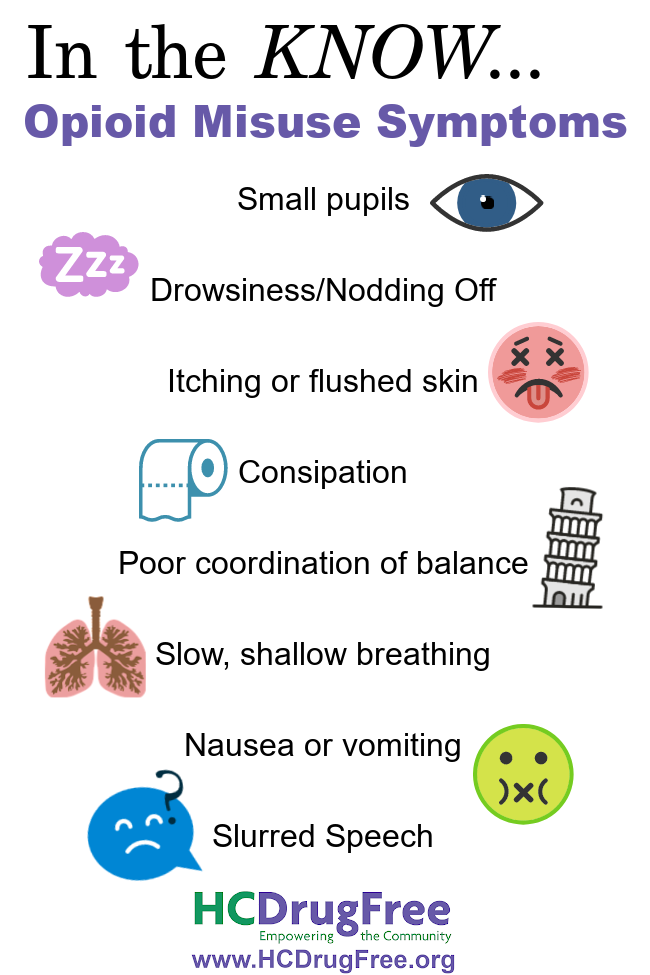
About Opioids
Studies show that three out of four people using heroin began with the use of prescription medication. Taken as prescribed, opioids may help manage pain when taken for a short amount of time. However, prolonged use often leads to physical dependence and the risk of addiction occurs. That risk is even greater when medications are taken at higher than recommended doses, combined with alcohol or other drugs, or taken without a prescription.
What are Opioids?
Opioids include illegal drugs such as heroin but also prescription medications used to treat pain such as Percocet, Darvocet, OxyContin, Codeine and others (see list below). Often, what is simply needed to help relieve pain becomes its own nightmare.
Dependence often begins as tolerance, the need to take higher doses of a medication to get the same effect. This is your first warning sign and you should discuss this with your doctor.
The dangers of addiction are greater than anyone realizes —and easier than one imagines.
How it works: Opioids attach to proteins in the body and reduce the intensity of pain signals reaching the brain. Opioids can produce drowsiness, vomiting, allergic reactions, mental confusion, nausea, constipation and can cause respiration problems.
Common Opioids
- Codeine (Tylenol w/Codeine, Phenaphen w/ Codeine)
- Darvon
- Darvocet
- Demerol
- Dilaudid
- Fentanyl (Actiq, Duragesic, Fentora)
- Heroin
- Hydrocodone (Hysingla ER, Zohydro ER)
- Hydrocodone/acetaminaphen (Lortab, Vicodin, Lorcet, Norco)
- Methadone (Dolophine, Methadose)
- Morphine (Kadian, Avinza, Astramorph, MS Contin)
- Oxycodone (OxyContin, Oxecta, Roxicodone)
- Oxycodone/acetaminophen (Percocet, Endocet, Roxicet)
- Suboxone (Talwin, Buprenorphine)
- Tramadol, Ultram
Dependence vs. Addiction
Physical dependence occurs because of normal adaptations to chronic exposure to a drug and is not the same as addiction. Addiction, which can include physical dependence, is distinguished by compulsive drug seeking and use despite sometimes devastating consequences.
Someone who is physically dependent on a medication will experience withdrawal symptoms when use of the drug is abruptly reduced or stopped. These symptoms can be mild or severe (depending on the drug) and can usually be managed medically or avoided by using a slow drug taper.
Dependence is often accompanied by tolerance, or the need to take higher doses of a medication to get the same effect. When tolerance occurs, it can be difficult for a physician to evaluate whether a patient is developing a drug problem, or has a real medical need for higher doses to control their symptoms. For this reason, physicians need to be vigilant and attentive to their patients’ symptoms and level of functioning to treat them appropriately.

Signs of Opioid Misuse
- Pinpoint pupils
- Slurred speech
- Difficulty breathing
- Confusion
- Abscesses
- Nasal problems
- Collapsed veins
- Nausea
- Itching or flushed skin
- Constipation
- Nodding off
Withdrawal Symptoms*
- Watery eyes, runny nose
- Agitation, irritability, anxiety, insomnia
- Muscle aches and pains
- Hot and cold sweats
- Yawning
- Abdominal cramping nausea, vomiting, diarrhea
- *Opioid withdrawal is extremely uncomfortable, but not life threatening. It is recommended that you contact a doctor or treatment center.
Signs of Overdose
- Pinpoint pupils
- Unconsciousness
- Labored breathing, difficulty breathing or shallow breathing
- Slow or erratic pulse
- Clammy skin
- Lips, fingers or face turn blue
- Limp body
- Vomiting
- Convulsions
- Death Rattle – snore-like gurgling noise. This indicates emergency resuscitation is needed IMMEDIATELY.
What To Do in An Overdose
- Call 911 immediately.
- Stay with the person.
- Give Naloxone (Narcan) if available.
- DO NOT slap the person, put into a cold bath or try to induce vomiting.
- Maryland’s Good Samaritan Law provides immunity for you AND the overdose victim if you call for help.
How to Avoid Opioid Misuse / Opioid Overdose
(From SAMHSA)
- Take medication only as prescribed.
- Do not take more than instructed.
- Call your doctor if your pain worsens.
- Never mix painkillers with alcohol or sleeping pills.
- Store your medication in a safe place.
- Dispose of unused medication properly.
- Teach your friends and family how to respond to an overdose.
- Discuss any concerns with your doctor.
- Click here for a list of questions to ask your doctor from the U.S. Food & Drug Administration.
- Click here for a list of questions to ask your doctor from Harvard Medical School.
Video Resources
Resources
National Institute on Drug Abuse: Opioids




